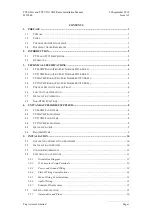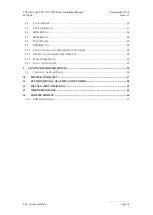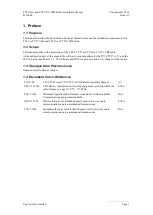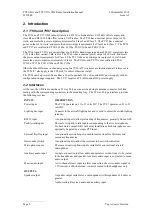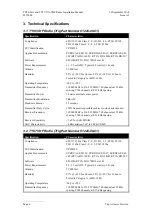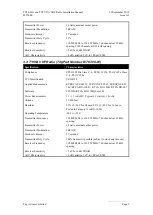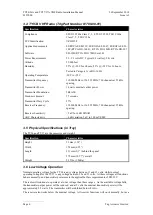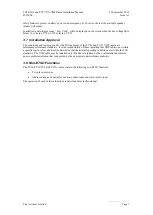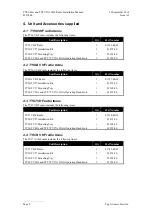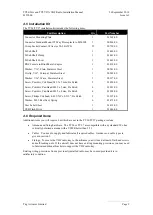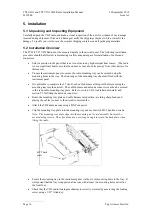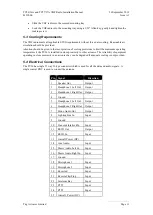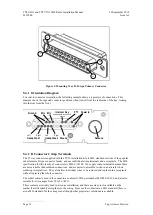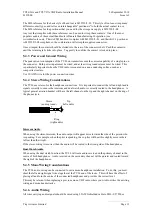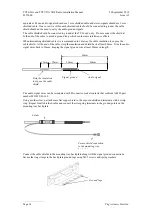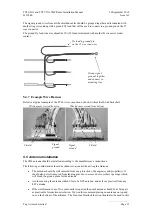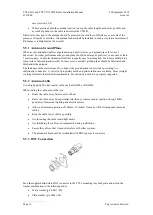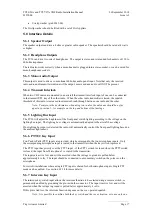
TY96/96A and TY97/97A VHF Radio Installation Manual
26 September 2018
01238-00
Issue AJ
______________________
Page 2
Trig Avionics Limited
2.
Introduction
2.1 TY96 and TY97 Description
The TY96 and TY97 VHF radio systems are ED-23C compliant class C (25 kHz offset carrier) and
class H1 and H2 (8.33 kHz offset carrier) VHF radios. The TY96 has a nominal power output of 10
watts, and meets the power output requirements for Class 3 and Class 5. The TY97 has a nominal
power output of 16 watts, and meets the power output requirements for Class 3 and Class 5. The TY96
and TY97 are certified to ETSO 2C169a, 2C128a, TSO C169a and TSO C128a.
The TY96A and TY97A are variants that use 25 KHz channel spacing and are ED-23C compliant class
C (25 kHz offset carrier) VHF radios. The TY96A has a nominal power output of 10 watts, and meets
the power output requirements for Class 4. The TY97A has a nominal power output of 16 watts, and
meets the power output requirements for Class 3. The TY96A and TY97A are certified to ETSO
2C169a, 2C128a, TSO C169a and TSO C128a.
Other than the difference in channel spacing the TY96A/97A variants are identical and all references to
the TY96/97 also apply to the TY96A/97A unless otherwise stated.
The TY96 can be powered from either a 14 volt nominal or 28 volt nominal DC power supply with no
configuration changes required. The TY97 requires a 28 volt nominal DC power supply.
2.2 Interfaces
At the rear, the VHF radio unit has a 25 way D-type connector and single antenna connector for blind
mating with the corresponding connectors in the mounting tray. The 25 way D-type interface provides
the following services:
INPUTS
DESCRIPTION
Power input
The TY96 operates on 11 to 33 volts DC. The TY97 operates on 22 to 33
volts DC.
Lighting bus input
Connects to the aircraft lighting bus and is used to adjust the switch lighting
intensity.
RS232 input
An optional input to allow preloading of frequencies, generally from a GPS.
Push-to-talk inputs
There are two push to talk inputs corresponding to the two microphones.
For backward compatibility with older installations both microphones can
optionally be gated by a single PTT input.
External flip-flop input
An optional keyswitch input to enable remote transfer of primary and
secondary frequencies
Intercom keyswitch
An optional input to allow the intercom to be switch controlled.
Microphone inputs
There are two microphone inputs, suitable for conventional aircraft
microphones.
Auxiliary audio input
A single connection to allow audio annunciators or ident tones to be routed
to the headphones and speaker. Auxiliary audio input is not routed to mono
audio output.
Music audio input
A two channel music input to allow connection of a stereo audio signal of
1.5Vrms into a 600 ohms load. Audio is routed to the headphones only.
OUTPUTS
Speaker output
A speaker output suitable for a cabin speaker with impedance of 4 ohms or
greater.
Audio routing: Received audio and auxiliary input.
Summary of Contents for TY96
Page 2: ...This page intentionally left blank ...
Page 6: ......



